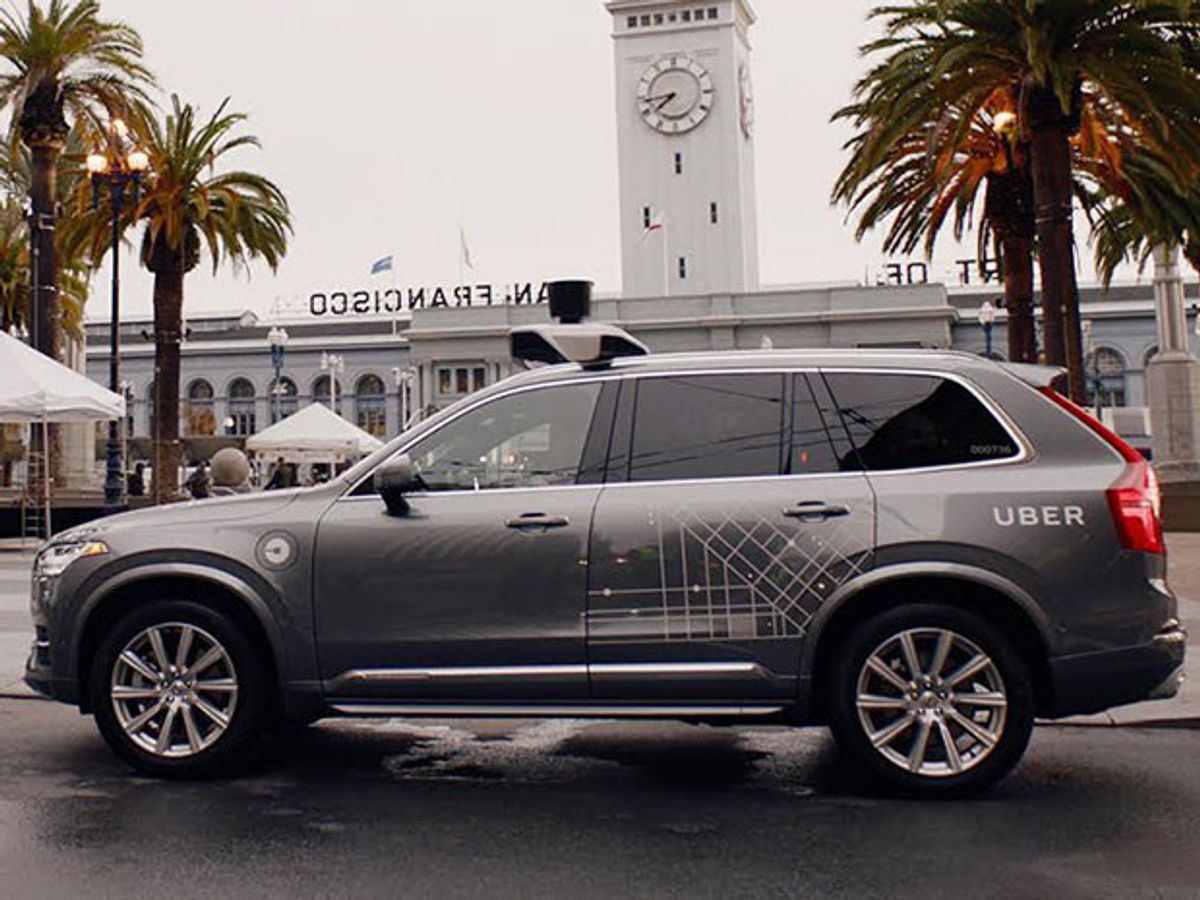Update, 22 December: Following threats of legal action by California regulators, Uber has suspended its self-driving car tests in San Francisco.
Is there a difference between a self-driving car and an autonomous one? That’s the question at the heart of an ongoing dispute between Uber and Californian regulators.
On Wednesday, Uber started offering free rides in what it calls “self-driving” cars: Volvo XC90 crossovers heavily modified with lidars, radars, cameras and onboard computers. The cars can respond when summoned by the Uber app, pick up passengers, then automatically navigate and drive to their respective destinations. If all goes well, the human safety drivers sitting in the front seat of these cars don’t have to touch the controls at all.
If that sounds similar to the 130 cars from 20 firms such as Tesla, Google and Ford that California’s Department of Motor Vehicles (DMV) has already granted autonomous vehicle test licenses, you’re not alone. The DMV’s Deputy Director and Chief Counsel Brian Soublet wrote to Uber, saying, “It is illegal for the company to operate its self-driving vehicles on public roads until it receives an autonomous vehicle testing permit.”
California insists on permits because they ensure trained personnel are in charge of the vehicles, require a $5 million bond in case things should go wrong, and include a system of reporting accidents and failures of the autonomous technology.
But Uber’s position is that while its cars might be able to drive themselves, they are far from autonomous. “The rules apply to cars that can drive without someone controlling or monitoring them,” wrote Anthony Levandowski, head of Uber’s Advanced Technology Group, in a blog post. “For us, it’s still early days and our cars are not yet ready to drive without a person monitoring them.”
This is an argument that Levandowski has used before. In January, Levandowski left Google (for whom he had built the company’s first self-driving Prius) to found Otto, a self-driving truck start-up. In May, Otto demonstrated a self-driving semi on I-80 in Nevada—without obtaining an autonomous vehicle testing permit. When confronted by an angry Nevada DMV official, the company claimed that the truck, which had no one in the front seats at all, was not autonomous because it needed to be monitored by an engineer further back in the cab.
“It’s a perfectly plausible reading [of the law] to say it’s an advanced driver assistance system and it is not intended to replace the driver,” says Bryant Walker Smith, an associate professor at the University of South Carolina. “But if a jurisdiction had a very skeptical view of the technology, they could certainly interpret [the law] in a contrary way. And if you’re a company that’s already irritating the state, you’re asking for a more restrictive interpretation.”
Uber definitely has a reputation for being an irritant in California, where it has argued with authorities about criminal background checks for drivers, and whether drivers should be treated as contractors ineligible for employee benefits.
Levandowski’s approach succeeded in Nevada. Although the Nevada DMV considered Otto’s driverless truck stunt illegal, it did not publicize or penalize the infraction. In fact, when Otto was subsequently acquired by Uber, Nevada rubberstamped an application from the companies to set up the state’s first facility to certify other autonomous vehicles. In his blog post on Wednesday, Levandowski said that Nevada has “made clear that [it is] pro technology.”
California could prove a tougher nut to crack. In his letter to Uber, Brian Soublet wrote: “If Uber does not confirm immediately that it will stop its launch and seek a testing permit, DMV will initiate legal action, including, but not limited to, seeking injunctive relief.”
As of Friday, the California DMV had not received a response from Uber. If the state proceeds with its threat, it could apply for a restraining order or injunction to prevent Uber from operating its cars within the state. Uber’s self-driving cars have already been spotted running red lights in the city. Should an injury or fatality occur, Uber’s refusal to obey the DMV might have serious consequences.
“If there were a crash, it would change very dramatically,” says Bryant Walker Smith. “At that point, non-compliance could be considered evidence of doing something unreasonable.”
Mark Harris is an investigative science and technology reporter based in Seattle, with a particular interest in robotics, transportation, green technologies, and medical devices. He’s on Twitter at @meharris and email at mark(at)meharris(dot)com. Email or DM for Signal number for sensitive/encrypted messaging.



